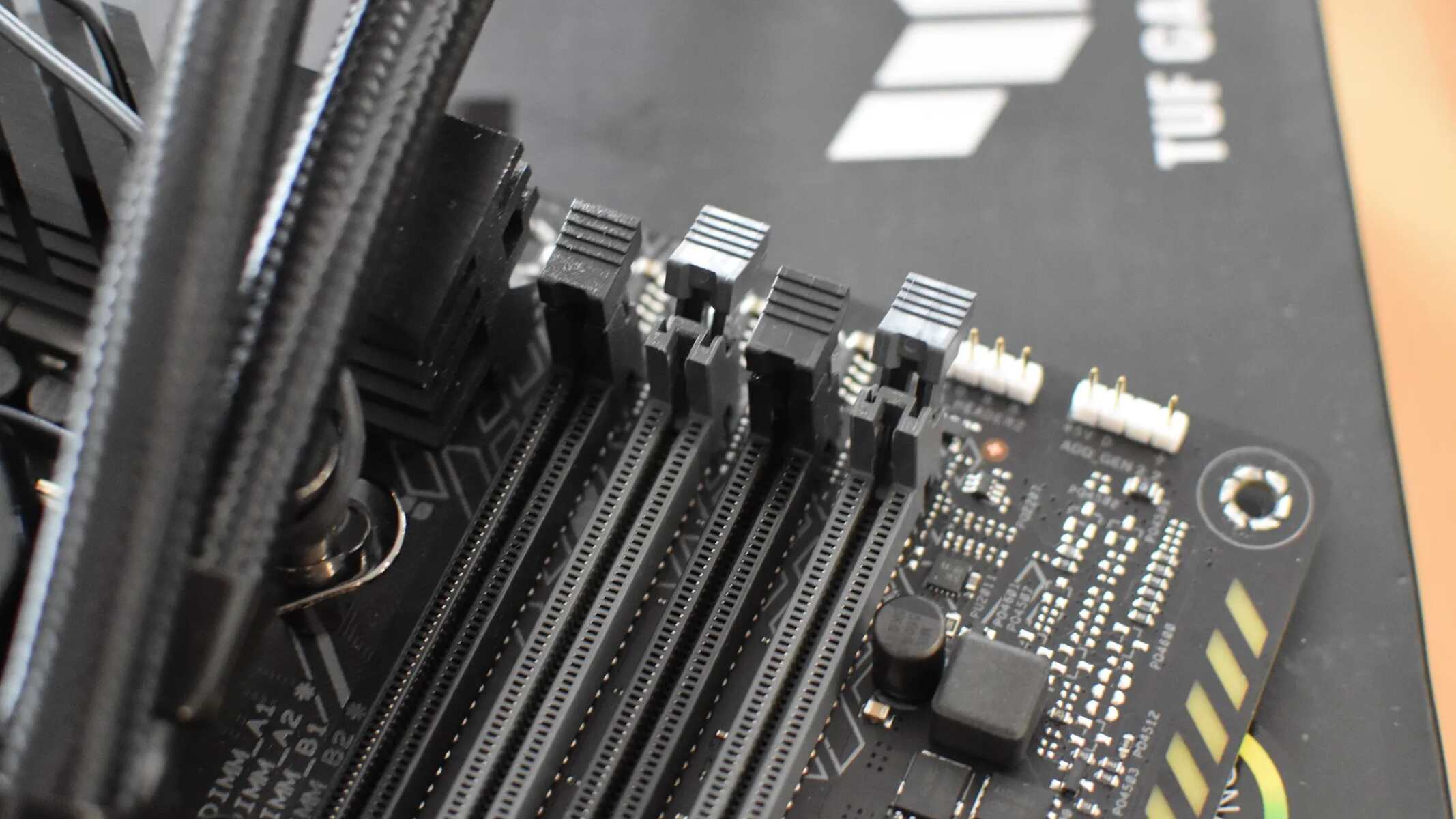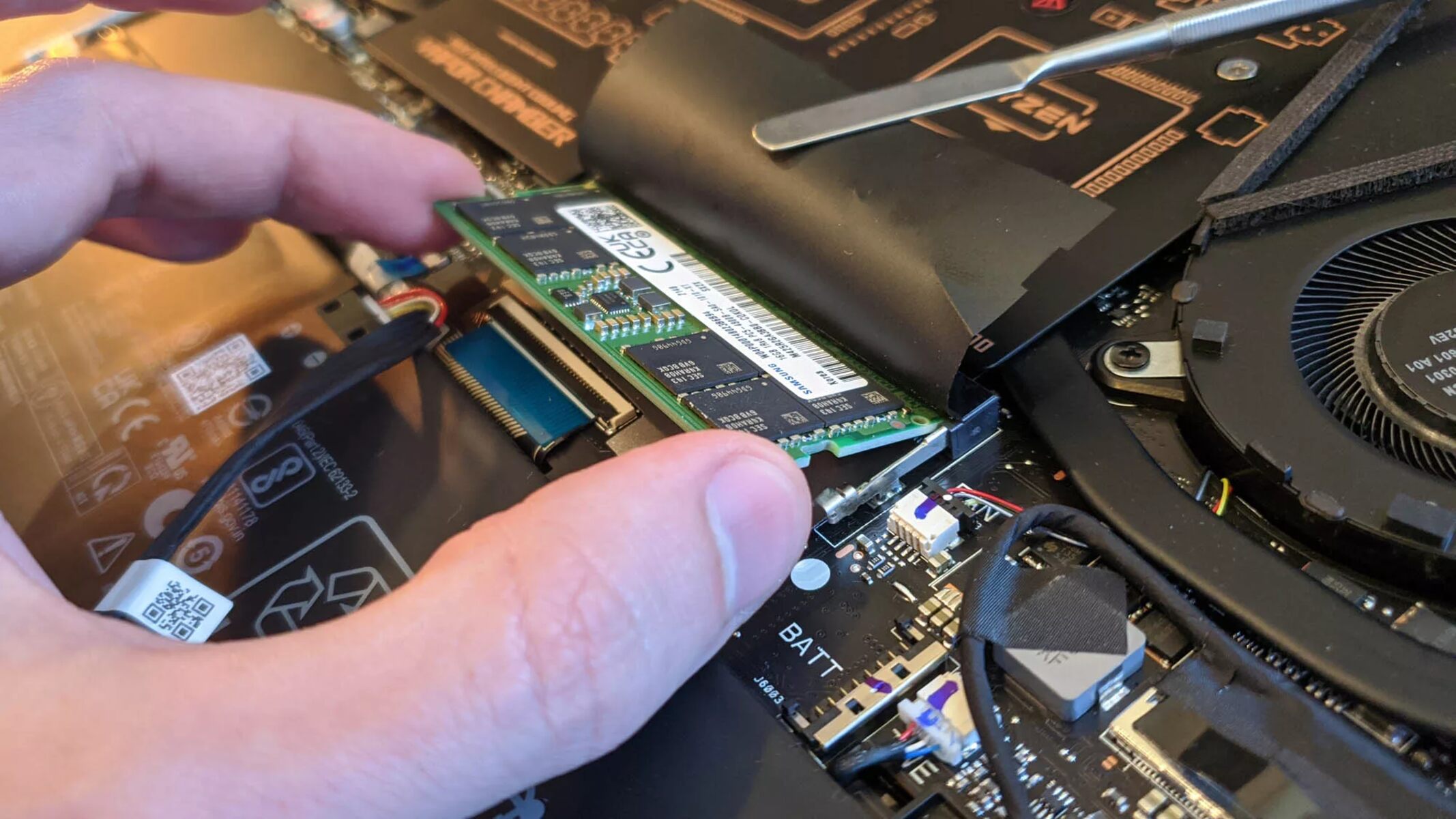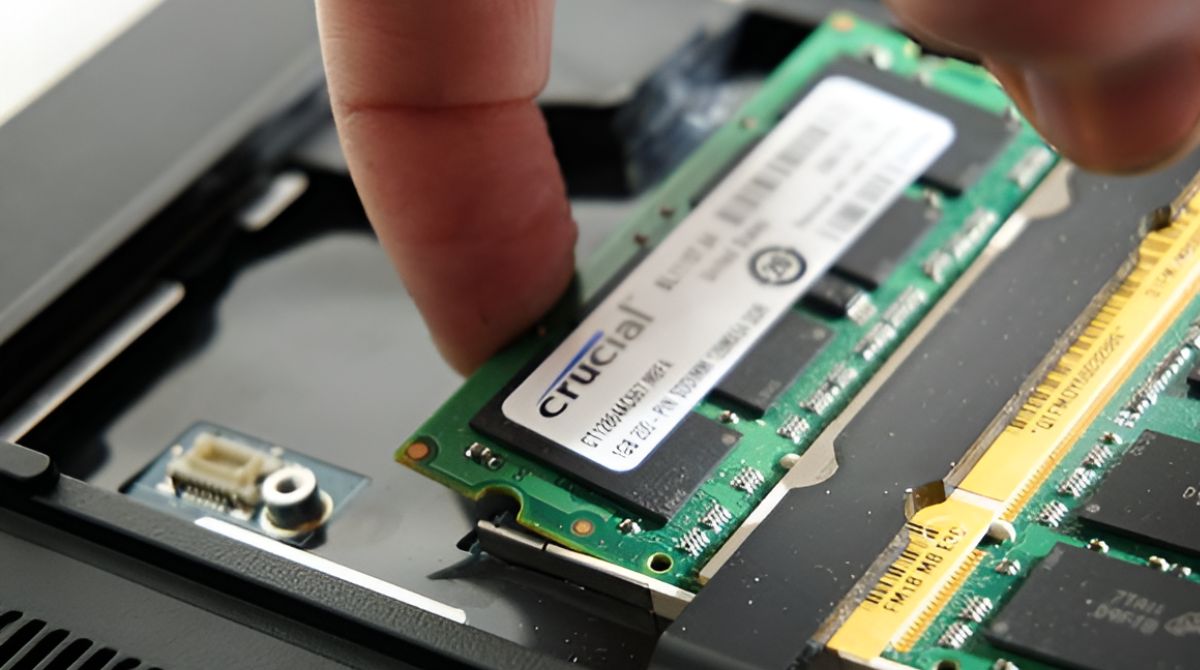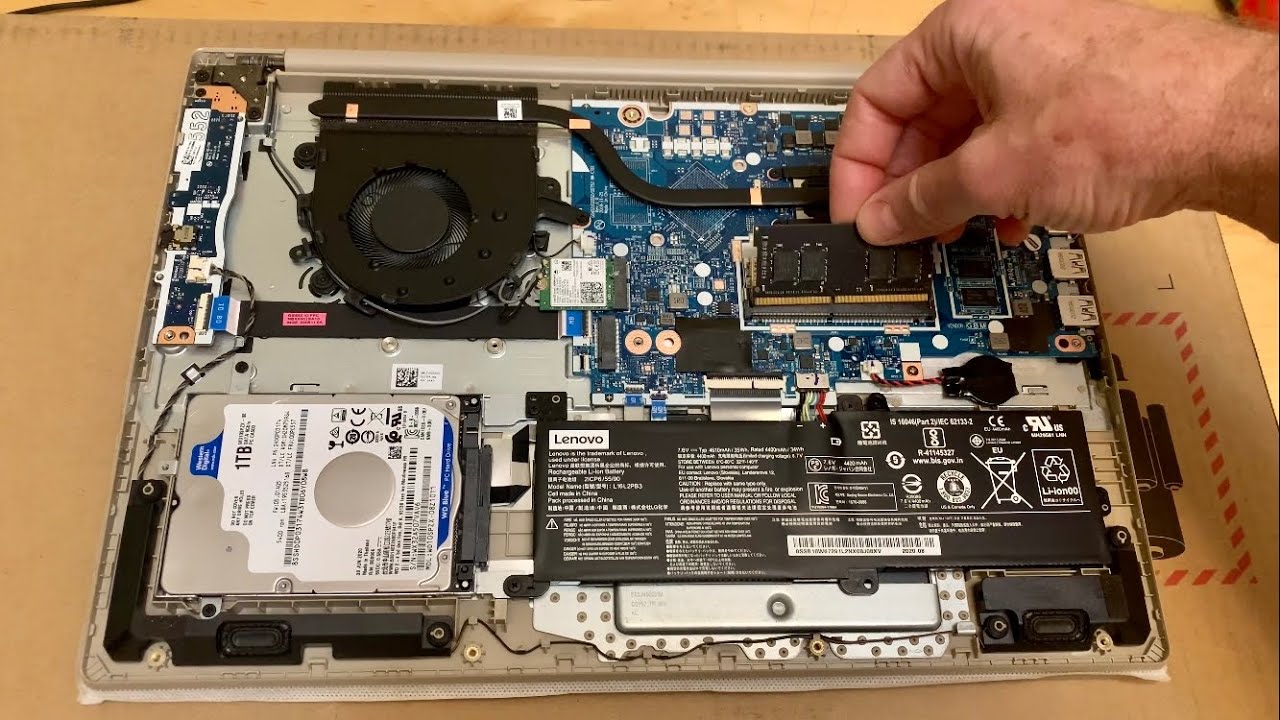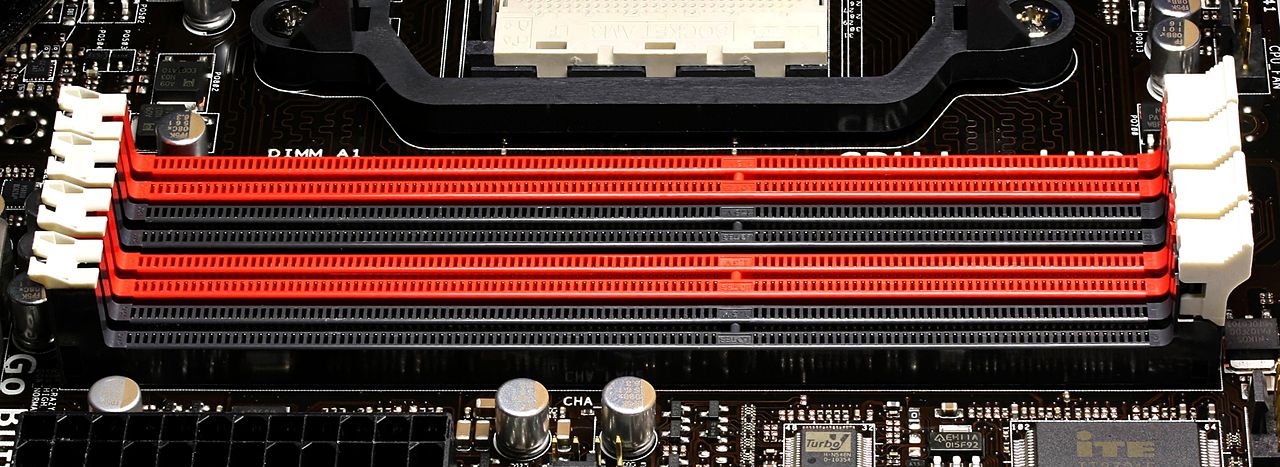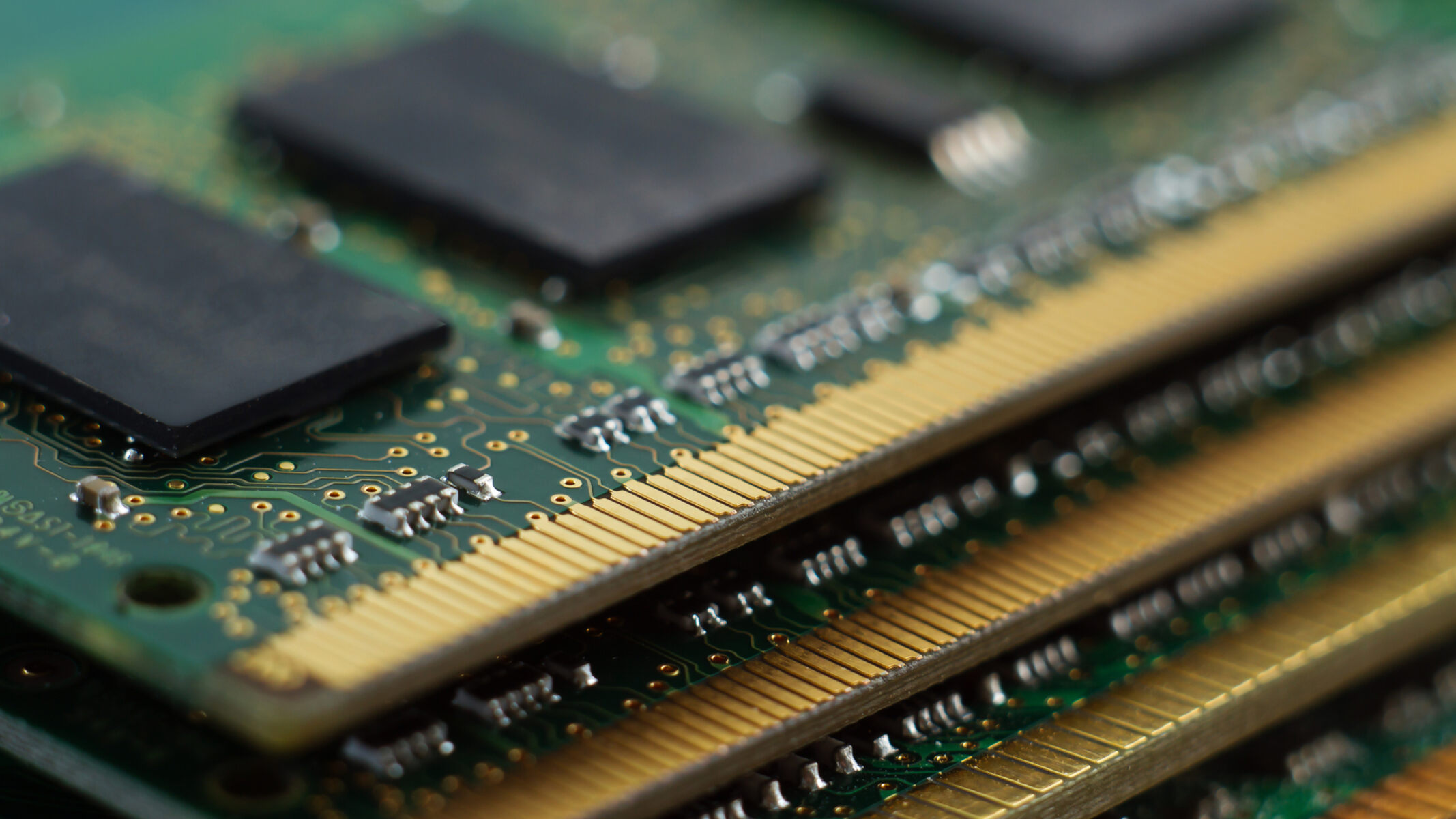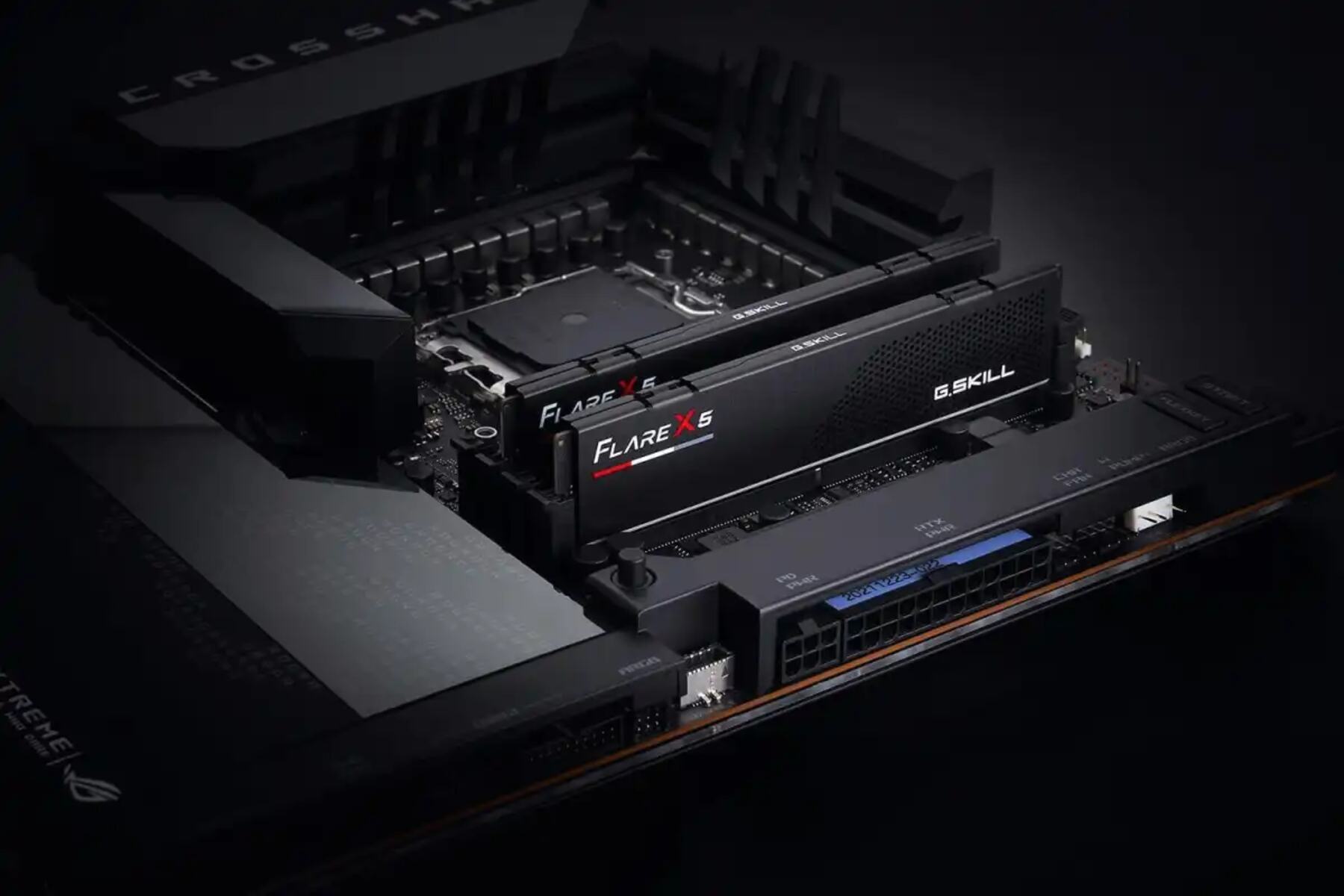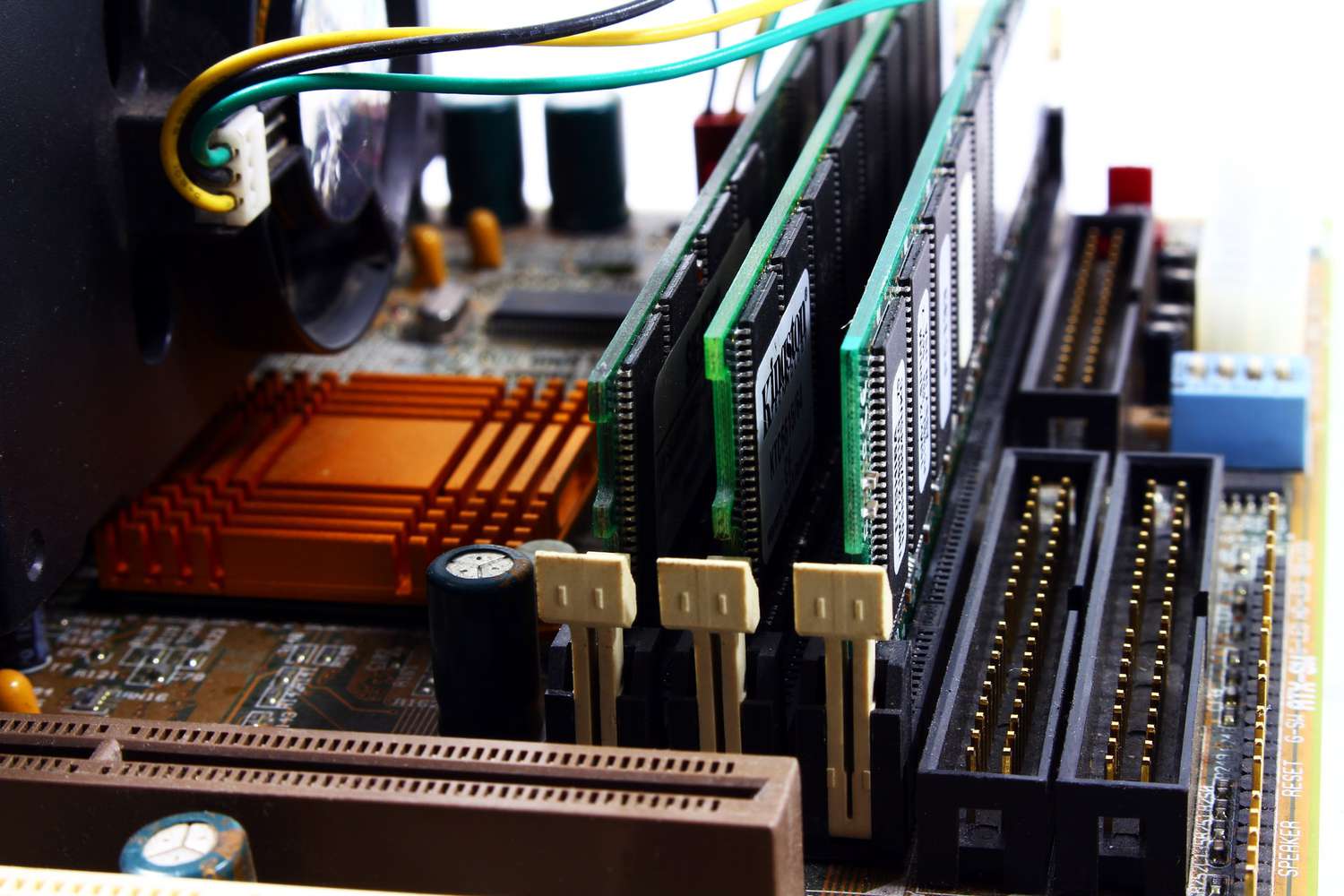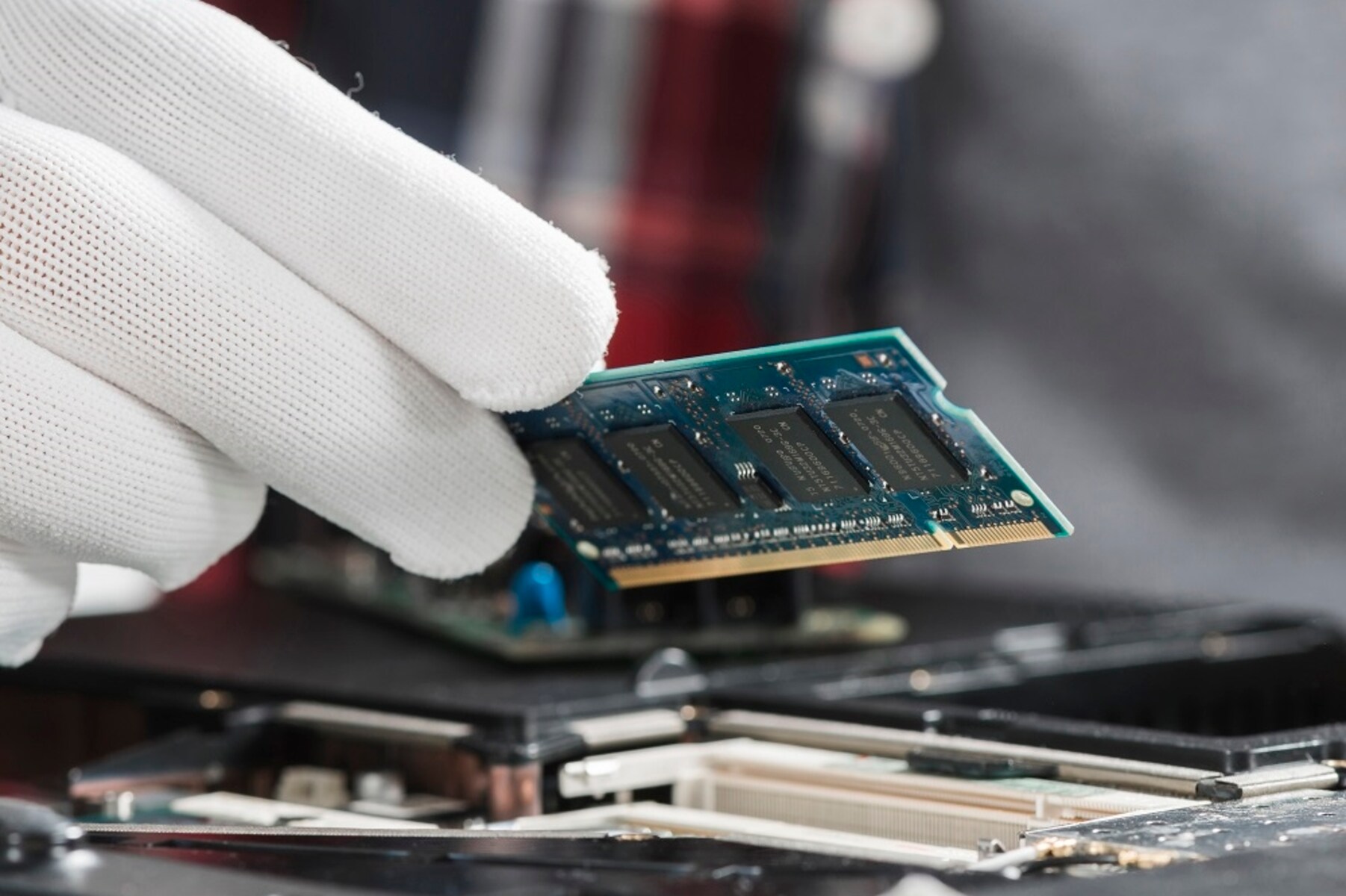Introduction
When it comes to upgrading or installing RAM (Random Access Memory) in your computer, one of the important considerations is which RAM slot to use. RAM slots, also known as DIMM slots (Dual Inline Memory Module), are the physical slots on your motherboard where you insert the RAM modules.
Understanding how to properly use RAM slots is crucial for achieving optimal performance from your computer. Using the wrong slot can result in slower speeds and performance issues. In this article, we will explore the purpose of RAM slots and guide you in using the correct RAM slot for your system.
Before we delve into the details, it’s important to have a basic understanding of RAM. RAM is a type of computer memory that is responsible for temporarily storing data that the computer is actively using. The more RAM you have, the more data your computer can store and access quickly.
RAM slots are designed to accommodate the physical placement of the RAM modules. The number of RAM slots available on a motherboard can vary, with most modern motherboards having four or more slots. Different types of RAM, such as DDR3 and DDR4, may require specific slots for proper installation.
Now that we have a general understanding of RAM slots, let’s explore their purpose in more detail and how to determine the correct slot to use for your system.
Understanding RAM Slots
RAM slots are physical slots on the motherboard that allow you to insert RAM modules. These slots are designed to complement the architecture of the RAM modules and ensure proper connectivity to the rest of the system. Understanding how RAM slots work is key to efficiently installing and upgrading your computer’s memory.
The number of RAM slots can vary depending on the motherboard model, with some having two, four, or more slots. Each slot is typically labeled for identification, and they are positioned in a specific order on the motherboard.
RAM slots are usually color-coded to indicate the channel configuration. Motherboards that support dual-channel memory will have slots of the same color grouped together. Dual-channel memory is a feature that allows the system to access memory in pairs, resulting in improved performance.
The type of RAM supported by the motherboard is also important to consider when understanding RAM slots. DDR3 and DDR4 are the two most common types of RAM used in computers today. While they have the same number of pins, they are not compatible with each other due to different voltage requirements and physical designs.
Another factor to consider is the speed of the RAM modules (measured in megahertz, or MHz) and whether they are compatible with the motherboard. Some motherboards have limitations on the maximum speed of RAM that they can support. It’s important to consult the motherboard manual or manufacturer’s website to ensure compatibility.
With these factors in mind, understanding the architecture of your RAM slots and the compatibility requirements will help you make informed decisions for RAM upgrades or installations. Next, let’s explore the purpose of RAM slots and how they affect overall system performance.
The Purpose of RAM Slots
RAM slots play a crucial role in the overall performance of your computer. They serve as the connection point between the RAM modules and the motherboard, allowing the CPU (Central Processing Unit) to access and manipulate data stored in RAM quickly. Understanding the purpose of RAM slots will help you comprehend the importance of using the correct slots.
One of the primary purposes of RAM slots is to provide physical support for the RAM modules. The slots securely hold the modules in place, ensuring proper alignment and electrical connectivity. This is crucial for data transfer and stability during system operations.
RAM slots also determine the maximum amount of RAM your system can support. Each slot has a specific capacity and, when all slots are populated, the total RAM capacity is the sum of the capacities of each module. For example, if each slot can support 8GB of RAM and you have four slots, your system’s maximum RAM capacity would be 32GB.
Another important function of RAM slots is to facilitate the use of dual-channel or quad-channel memory configurations. Dual-channel and quad-channel memory setups improve memory performance by allowing the system to access memory in parallel. This results in increased data transfer speeds and improved overall system responsiveness.
The utilization of the correct RAM slots is essential for enabling these parallel memory configurations. Placing the RAM modules in the wrong slots can hinder the performance benefits of dual-channel or quad-channel memory operation.
Furthermore, using the correct RAM slots ensures compatibility with the system’s memory controller. Different memory controllers have specific requirements for the population order of RAM modules, especially when using multiple modules or different capacities. Consulting the motherboard’s manual or manufacturer’s guidelines will help you determine the recommended slot configuration.
By understanding the purpose of RAM slots and their impact on memory capacity, performance, and compatibility, you can make informed decisions when upgrading or installing RAM modules. Next, we’ll explore the difference between dual-channel and single-channel RAM configurations and how they relate to RAM slot usage.
Dual Channel vs. Single Channel RAM
When it comes to RAM configurations, you may have come across the terms “dual channel” and “single channel.” These terms refer to the way memory modules are installed and accessed in relation to the RAM slots on your motherboard. Understanding the difference between dual channel and single channel RAM configurations is important for optimizing memory performance.
In a single channel configuration, the RAM modules are installed in a single pair of slots on the motherboard. This means that all data is accessed through a single memory channel. While this setup is functional, it does not provide the performance benefits of dual channel memory.
Dual channel memory, on the other hand, utilizes two pairs of RAM slots on the motherboard. The RAM modules are installed in matching pairs, often indicated by color-coded slots. By using two separate memory channels, the system can simultaneously access data from both pairs of slots, resulting in increased memory bandwidth and improved overall performance.
The main advantage of dual channel memory is the increased data transfer rate. It allows for more efficient read and write operations, improving the system’s ability to handle multitasking, memory-intensive applications, and demanding tasks such as gaming and video editing.
It’s important to note that for dual channel memory to function properly, the RAM modules must be installed in the correct slots. Typically, this means placing two identical modules in matching-color slots. Consult your motherboard’s manual to determine the recommended configuration for enabling dual channel memory.
It’s worth mentioning that not all systems support dual channel memory. Some entry-level or older systems may only have a single memory channel available. In such cases, using dual channel memory modules will not provide any noticeable performance boost, as the system is incapable of utilizing the additional memory channel.
Ultimately, the decision between dual channel and single channel RAM configurations depends on your specific needs and the capabilities of your system. If your system supports dual channel memory, it is generally recommended to take advantage of this setup to maximize memory performance.
Now that we’ve covered the difference between dual channel and single channel RAM configurations, let’s explore how to determine the correct RAM slots to use for your system.
Using the Correct RAM Slots
Using the correct RAM slots on your motherboard is crucial for ensuring optimal performance and compatibility with your RAM modules. Here are some steps to help you determine the correct RAM slots to use:
- Check the motherboard manual: The first step is to consult the motherboard manual or the manufacturer’s website. They will provide detailed information on the layout and configuration of the RAM slots. Look for specific instructions on which slots to use for different memory configurations.
- Identify the DIMM slots: DIMM slots are where the RAM modules are inserted on the motherboard. They are typically labeled clearly near the slots. Take note of the numbers or labels assigned to each slot.
- Consider the memory channel configuration: If your motherboard supports dual-channel or quad-channel memory, you need to install the RAM modules in specific slots. The slots for each channel are usually color-coded or labeled. Make sure to match the color or numbering of the slots with the RAM modules you are installing.
- Follow the population order: Some motherboards require specific population order for RAM modules. For example, you may need to install the modules in a particular sequence, such as from slot 1 to slot 4. Always adhere to the recommended population order mentioned in the motherboard manual to ensure proper functionality.
- Consider the maximum supported RAM: When using multiple RAM modules, make sure to check the maximum supported RAM capacity of your motherboard. Some motherboards have limitations on the maximum amount of RAM they can support per slot or in total. Exceeding the maximum capacity may result in stability issues or the system not recognizing the additional RAM.
By following these steps, you can determine the correct RAM slots to use for your motherboard and ensure compatibility and optimal performance for your RAM modules.
Next, let’s discuss the importance of consulting the motherboard manual when installing or upgrading RAM, as well as common mistakes to avoid.
Checking the Motherboard Manual
When it comes to installing or upgrading RAM, one of the most important resources at your disposal is the motherboard manual. The motherboard manual provides crucial information on the layout, specifications, and guidelines for proper RAM installation on your specific motherboard model. Here’s why checking the motherboard manual is essential:
- Specific instructions: The motherboard manual will provide you with specific instructions on how to install RAM modules and which slots to use. It will outline the recommended population order, the supported memory configurations, and any specific requirements or limitations.
- Compatibility information: The motherboard manual will indicate the types of RAM supported by the motherboard, such as DDR3 or DDR4. It may also provide information on the maximum frequency or capacity that the motherboard can accommodate. This ensures that you choose RAM modules that are compatible with your motherboard.
- Recommended RAM configurations: The manual may suggest specific RAM configurations for optimal performance. It may provide guidelines on using dual-channel or quad-channel memory setups and which slots to populate. Following these recommendations can help you maximize memory performance.
- System stability: Installing RAM incorrectly or using incompatible RAM modules can lead to system instability, crashes, or even failure to boot. The motherboard manual will help you avoid such issues by providing the necessary information to make informed decisions regarding RAM installation.
- Manufacturer updates: Motherboard manufacturers may occasionally release firmware updates or BIOS updates that can improve RAM compatibility or address known issues. The manual may include instructions on how to update the motherboard firmware if needed.
Remember, each motherboard model may have specific requirements, and relying on generic guidelines may not provide the best results. Therefore, it’s crucial to consult your motherboard manual for accurate and up-to-date information pertaining to your specific motherboard model.
By checking the motherboard manual, you can ensure proper RAM installation, compatibility, and system stability. However, there are some common mistakes to avoid, which we’ll cover in the next section.
Identifying the DIMM Slots
Identifying the DIMM (Dual Inline Memory Module) slots on your motherboard is crucial for proper RAM installation and configuration. The DIMM slots are where the RAM modules are inserted, and understanding how to identify them is an important step in the RAM installation process. Here are some tips to help you identify the DIMM slots on your motherboard:
- Consult the motherboard manual: The motherboard manual is the best resource for identifying the DIMM slots on your specific motherboard model. It will provide a detailed diagram or description of the slot locations, along with any specific instructions or labeling conventions.
- Look for visual indicators: On most motherboards, the DIMM slots are labeled and color-coded for easy identification. Look for numbers, labels, or symbols near the slots that indicate their purpose or the recommended installation order.
- Count the slots: In some cases, the DIMM slots may not be labeled or color-coded. In such situations, you can visually count the slots to determine their number and location. Most motherboards have two or more DIMM slots, so counting from one side of the motherboard to the other can help you identify them.
- Consider the slot arrangement: DIMM slots are typically arranged in a specific pattern on the motherboard. They are often aligned in pairs or groups to support dual-channel or quad-channel memory configurations. Understanding the arrangement can help you determine which slots to use for specific memory configurations.
- Take note of the physical characteristics: DIMM slots have a distinct shape and design that differentiates them from other slots on the motherboard, such as expansion slots. They are rectangular and have notches or cutouts at specific locations to ensure proper alignment of the RAM modules.
By following these tips, you should be able to identify the DIMM slots on your motherboard with ease. If you’re still unsure, don’t hesitate to consult the motherboard manual or reach out to the manufacturer’s support for additional assistance.
Now that you’ve identified the DIMM slots, it’s important to be aware of common mistakes to avoid during RAM installation or upgrades. We’ll discuss these in the next section.
Common Mistakes to Avoid
Even though installing or upgrading RAM is a relatively straightforward process, there are some common mistakes that can be easily overlooked. By being aware of these mistakes, you can ensure a smooth and successful RAM installation or upgrade. Here are some common mistakes to avoid:
- Using incompatible RAM: It’s important to ensure that the RAM modules you are using are compatible with your motherboard. Check the motherboard manual or manufacturer’s website for the supported RAM types, speeds, and capacities. Installing incompatible RAM can result in system instability or failure to boot.
- Not inserting the RAM properly: RAM modules need to be fully inserted and properly seated in the DIMM slots. Make sure to align the notches on the RAM module with the corresponding tabs in the slot, and firmly press down on both ends until the latches on the sides snap shut. Failing to insert the RAM correctly may result in the system not recognizing the modules or experiencing intermittent issues.
- Mixing different RAM speeds or capacities: While it is possible to mix RAM modules with different capacities or speeds, it is generally not recommended. Mixing RAM modules can lead to compatibility issues and may result in the system defaulting to the lowest speed or capacity module. If you want to add additional RAM, it is best to match the existing module characteristics as closely as possible.
- Ignoring population order: Some motherboards require specific population order when installing multiple RAM modules. The motherboard manual will provide guidelines on the recommended order. Failing to follow the population order can result in the RAM not functioning optimally or the system not booting at all.
- Forgetting to ground yourself: Before handling any computer components, including RAM modules, it’s important to discharge any static electricity from your body to prevent potential damage to the sensitive electronic components. You can do this by grounding yourself to a metal object, such as the computer case or a grounded surface.
- Not updating the BIOS: When upgrading to new RAM modules or using different configurations, it’s a good idea to check if there are any firmware updates available for your motherboard. Updating the BIOS can help ensure proper recognition and compatibility of the new RAM modules.
By avoiding these common mistakes and following proper installation procedures, you can significantly reduce the risk of encountering issues when installing or upgrading RAM. If you have any doubts or questions, don’t hesitate to consult the motherboard manual or seek assistance from technical support.
Now that we’ve covered the common mistakes to avoid, let’s conclude our discussion on RAM slots and their importance in achieving optimal system performance.
Conclusion
Understanding RAM slots and using the correct slots for RAM installation is essential for maximizing system performance. By following the guidelines provided in the motherboard manual and considering factors such as dual-channel configurations, compatible RAM types, and proper installation techniques, you can ensure optimal utilization of your computer’s memory.
RAM slots serve as the physical connection point between the motherboard and the RAM modules, providing support, alignment, and electrical connectivity. They determine the maximum capacity, memory channel configurations, and compatibility of your system. By using the correct RAM slots, you can enable dual-channel or quad-channel memory configurations, resulting in increased memory bandwidth and improved overall system responsiveness.
Checking the motherboard manual is crucial for obtaining specific instructions, recommended RAM configurations, and important compatibility information. It also helps you avoid common installation mistakes and ensures system stability.
Remember to take precautions, such as grounding yourself and updating the BIOS firmware, to minimize the risk of damage and ensure proper recognition of the RAM modules.
By understanding and utilizing RAM slots effectively, you can enhance your computer’s performance, improve multitasking capabilities, and achieve an overall smoother and faster computing experience.
So, next time you plan to upgrade or install RAM, take the time to consult the motherboard manual, identify the correct DIMM slots, and follow the recommended guidelines. With the right RAM configuration and proper installation, you can unleash the full potential of your computer’s memory.







